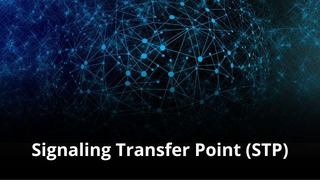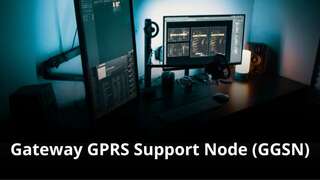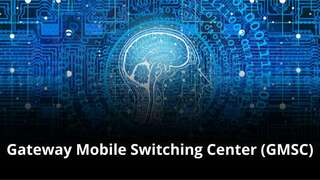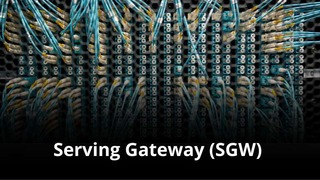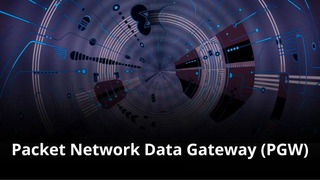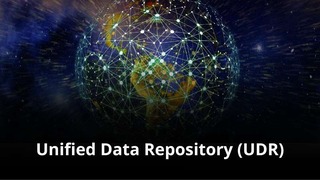Introduction about the Gateway GPRS Support Node (GGSN)
The Gateway GPRS Support Node (GGSN) is a pivotal network element within the core of 2G and 3G General Packet Radio Service (GPRS) and Universal Mobile Telecommunications System (UMTS) networks. Its primary and critical role is to act as the gateway between the mobile network and external packet data networks, most commonly the internet. Understanding the GGSN is fundamental to comprehending how mobile data traffic is aggregated, routed, and managed before exiting the operator’s private infrastructure.
What are the details of an Gateway GPRS Support Node (GGSN)?
- History and Evolution of the Gateway GPRS Support Node
- Core Utility and Functionality of the GGSN
- Technical Integration and Data Model
- GGSN Ownership for MVNOs and IoT Companies
- Organizational Impact of GGSN Ownership?
- Redundancy and High Availability
- Impact of 4G, 5G, and 6G on the GGSN
- Frequently Asked Questions about the GGSN
- Summary
History and Evolution of the GGSN
The concept of the Gateway GPRS Support Node (GGSN) emerged alongside the introduction of GPRS technology (often referred to as 2.5G) in the late 1990s. This development transitioned mobile networks from being purely circuit-switched (voice/SMS) to including packet-switched data services. The GGSN was necessary to manage the user’s data session and interface with external IP networks. When 3G (UMTS) was deployed, the GGSN continued its role, handling increased data speeds and volumes. Its functions were later evolved and separated into the Packet Data Network Gateway (PGW) and the Serving Gateway (SGW) in the 4G (LTE) network architecture. The evolution is:
Core Utility and Functionality of the GGSN
What is the GGSN Used For?
The Gateway GPRS Support Node (GGSN) is the crucial point where mobile data traffic exits the network to its destination, such as the public internet or a corporate intranet. Its main purpose is to maintain and anchor the data connection, known as the Packet Data Protocol (PDP) context, for each active user. This anchor point is vital as the user moves across different locations within the mobile network. Deploying a robust GGSN is necessary to ensure reliable, high-speed data connectivity and to manage the quality of service for all packet data services.
Key Functions of the Gateway GPRS Support Node
Investigate the core functions of the Gateway GPRS Support Node (GGSN) to understand its critical role in data traffic management:
- IP Address Allocation: It assigns a dynamic or static IP address to the mobile subscriber’s device (User Equipment).
- PDP Context Activation: The GGSN manages the establishment, modification, and termination of the user’s data session anchor.
- Data Packet Routing: It acts as the final router, forwarding data packets between the mobile network and external IP networks.
- Charging Data Record (CDR) Generation: The GGSN collects data on usage volume, duration, and time of day for billing purposes.
- Quality of Service (QoS) Enforcement: It ensures the agreed-upon data transmission quality is applied to the user’s traffic.
- Inter-working with External Networks: The GGSN interfaces with protocols like IP and provides the necessary translation.
- Screening and Firewalling: It offers basic security functions to protect the internal core network from external threats.
- Tunnelling Endpoint: It serves as the tunnel termination point for the GPRS Tunnelling Protocol (GTP) packets from the SGSN.
- Mobility Management: The GGSN ensures session continuity as the user moves between different Serving GPRS Support Nodes (SGSNs).
Technical Integration and Data Model
The Gateway GPRS Support Node (GGSN) is connected deeply into the GPRS core network. Examine its key integration points to appreciate its centrality in data traffic. It connects primarily to the Serving GPRS Support Node (SGSN), which is responsible for mobility management and is located closer to the radio access network. This connection uses the Gn interface. The GGSN also interfaces with the Home Location Register (HLR) via the Gr interface to retrieve subscriber data and verify service authorization. Finally, it communicates with the Online Charging System (OCS) and Offline Charging System (OFCS) for billing purposes.

Technical Data Model and Key Interfaces
The Gateway GPRS Support Node (GGSN) manages a dynamic Technical Data Model. This model stores active PDP Contexts, QoS profiles, and IP address mappings for every user currently active on the data network. The model is optimized for fast lookup and modification to maintain session continuity. Key interfaces utilized by the GGSN include:
- Gn/Gp Interface: These interfaces use the GPRS Tunnelling Protocol (GTP) to communicate with the SGSN (Gn within the same network, Gp for roaming).
- Gi Interface: This interface connects the GGSN to external IP networks, such as the internet.
- Gz/Gy Interfaces: These interfaces connect the GGSN to the OFCS (Gz) and OCS (Gy) respectively, typically using the Diameter or GTP’ protocols for billing data transfer.
GGSM Ownership for MVNOs and IoT Companies
Why Own an GGSN?
For a Mobile Virtual Network Operator (MVNO) or an IoT company, owning a dedicated Gateway GPRS Support Node (GGSN) (or its modern equivalent, the PGW/SGW) is highly strategic. Consider that the GGSN is where the crucial link to the internet is made. Owning it allows these companies to control their IP addressing schemes, tailor QoS settings for specific services (like low-latency IoT traffic), and integrate directly with their own billing and value-added service platforms.
Advantages and Disadvantages of GGSN Ownership
Control IP Addresses and the data routing to specific service endpoints.
Customized Quality of Serivce/Traffic Policies for differentiated data services.
Direct Integration with own billing and policy control systems ( OCS/PCRF).
Enhanced Security and firewalling capabilities at the network edge.
Monetization Flexibility by offering unique, specific-purpose data plans.
High Initial Investment in specialized high-capacity hardware & software.
Operational Complexity requiring expertise in GTP, IP routing, and network security.
Maintenance Overhead for a high-throughput, mission-critical network element.
Interconnection Challenges with host MNO’s internal SGSN and network.
Scalability Pressure to constantly match the increasing demands of mobile data consumption
Organizational Impact of GGSN Ownership
Analyzing the organizational impact of owning a Gateway GPRS Support Node (GGSN) across various business units.
Operational Impact: Requires the establishment of a dedicated Core Network Operations Center (NOC) team. This team must monitor data throughput, manage IP address pools, and ensure GTP tunnel stability. Recruitment of personnel with deep expertise in mobile core signaling and routing is critical.
Financial Impact: Evaluate the significant upfront capital expenditure (CapEx) for the GGSN platform and licenses. There will be ongoing operational expenditure (OpEx) for power, network peering costs, and high-skilled network engineering salaries. Ownership grants direct control over the cost of goods sold for data.
Commercial Impact: Leverage the GGSN to launch innovative, specific data products like unmetered access to certain applications or specific corporate data networks. This capability can be a powerful market differentiator for targeted MVNO and IoT solutions.
Technical Impact: Mandates end-to-end technical responsibility for all data session quality and security at the network exit point. The company must manage all routing table updates, security patches, and capacity planning for data growth.
Redundancy and High Availability

The Gateway GPRS Support Node (GGSN) is a critical traffic concentration point; therefore, Redundancy and High Availability (HA) are absolutely required. Implement a fully redundant system, typically using load sharing and geographical redundancy across multiple sites. This ensures that any component or site failure does not interrupt active data sessions or cause mass disconnection. The GGSN must support the graceful handover of active PDP Contexts to a standby unit. Ensure that the GTP-C (Control Plane) and GTP-U (User Plane) elements are robustly separated and protected against single-point failures.
Impact of 4G, 5G, and 6G on the GGSN
GGSN’s Transition
In 4G (LTE), the functions of the Gateway GPRS Support Node (GGSN) were split between two separate entities: the Serving Gateway (SGW) and the Packet Data Network Gateway (PGW). The PGW assumed the GGSN’s role as the anchor point to the external IP network. The GGSN remains only to provide interworking with legacy 2G/3G networks. Recognize that the GGSN is functionally superseded but still exists for backward compatibility.
5G and 6G Architecture
In the 5G core, the function is further evolved into the User Plane Function (UPF) and the Session Management Function (SMF). The UPF acts as the data packet handler (like the GGSN’s user plane). The SMF manages the session and IP address allocation (like the GGSN’s control plane). As 6G technology emerges, Anticipate these functions will become fully software-defined, virtualized, and distributed closer to the edge. This supports ultra-low latency applications, but the core role of the GGSN—anchoring the user’s data connection—will endure.
Frequently Asked Questions about the Authentication Server Function (AUSF)
1. What is the difference between an SGSN and a GGSN?
The SGSN (Serving GPRS Support Node) tracks the mobile device’s physical location and manages mobility within the network. The GGSN serves as the anchor point and gateway, connecting the internal GPRS network to the external internet.
2. What is a PDP Context?
A PDP Context (Packet Data Protocol Context) is the logical session established between the mobile device and the GGSN. It defines the parameters for the data transfer, including the allocated IP address and the Quality of Service (QoS) level.
3. What protocol is used for tunnelling data to the GGSN?
The data is tunneled to the GGSN using the GPRS Tunnelling Protocol (GTP). This protocol encapsulates the user’s IP packets for secure transfer across the operator’s internal network.
4. How does the GGSN handle the user's IP address?
The GGSN is the entity responsible for dynamically allocating an IP address to the mobile device upon the activation of a PDP Context, allowing the device to communicate on the public internet.
5. Is the GGSN still relevant in modern mobile networks?
The dedicated GGSN is largely replaced by the PGW and SGW in 4G and the UPF/SMF in 5G. However, its functions remain crucial, and the GGSN is still operated today to ensure backward compatibility for 2G and 3G devices and services.
Summary
The Gateway GPRS Support Node (GGSN) is the essential anchor and gateway for mobile data, connecting the operator’s core network to the external internet. Owning a GGSN (or its modern equivalent) provides MVNOs and IoT companies with invaluable control over data routing, quality of service, and direct monetization capabilities. This decision requires significant capital investment and advanced expertise in core network routing and security. While its functionality has evolved and is now distributed across the PGW, SGW, and 5G’s UPF/SMF, the GGSN’s core role as the intelligent data exit point remains one of the most critical in the mobile ecosystem.
